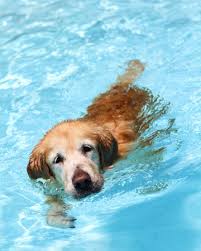The cold, short days of winter make it easy to hibernate and hard to motivate. It means less exercise and less energy. Now that spring is here, it’s time to get outside and get moving. We all know how important regular exercise is for keeping our bodies and minds healthy. The same goes for our canine family members, especially our furry seniors.
As your dog ages, they become less energetic which leads to less activity, weight gain and possible health problems like sore muscles, arthritis, joint issues and heart problems, to list only a few. It can be good to try giving your dog some of the products listed on Pharm Organics to help keep them happy, but regular exercise helps to maintain a healthy weight, promotes strong muscles and bones, keeps joints lubricated, helps to alleviate arthritis pain and contributes to so many other mental and physical benefits.
The best low impact exercises for your dog are walking and swimming, but with seniors, there are things to consider.

A daily walking routine is your best bet. Always walk in a safe, well-lit area. Make sure the surface is safe and not slippery and your dog has good traction. Limited mobility means there’s more of a chance for slipping and falling. If you’re using a professional dog walker make sure they have a dog walking van (read more here) so you know your dog walker can take your dog to a location that will best suit the mobility of your dog. Senior dogs tend to be more sensitive to extreme temperatures, so make sure it’s not too hot or too cold and always bring water along. Keep walks short. Walk slowly with your pet, as seniors tend to need frequent breaks and rest stops, so be patient. Dog walking can really develop and maintain your relationship with your dog, so make the most of your time with your furry friend on the lovely walks you take them on.

Time for a swim? Swimming is fun for your dog, but it’s also the perfect exercise, as there’s less chance of injury from more strenuous exercises like fetch or running. Swimming is great cardio for heart health and it improves muscle strength and tone. Always help your dog into the water. Use a ramp if necessary. If the water is too cold for you, it’s probably too cold for your dog. Never push them to get into the water if they don’t want to. If they’re hesitant or afraid, maybe swimming is not for them. Always stay nearby and never leave them unattended. Perhaps consider keeping them on a dog harness, JugDog has reviewed 13 of them so you can find the best for your pooches needs. And make sure to check your area for dog swimming lessons or pools.
Know what your pet is capable of and more importantly, know their limitations. Take it slow and don’t overdo it. Your dog will let you know when he’s had enough and it’s important to follow their lead. Excessive panting, coughing, limping or favoring a paw is not normal behavior. If these signs don’t stop shortly after the exercise stops, it might be time to have them checked by your vet.
According to www.petmd.com, it’s important to talk to your vet about orthopedic exams, X-rays (if necessary) and any prescription medication or supplements they recommend for your specific pet to help keep them active and healthy. It’s a good idea to have your pet checked by your vet before starting any regular exercise routine.
